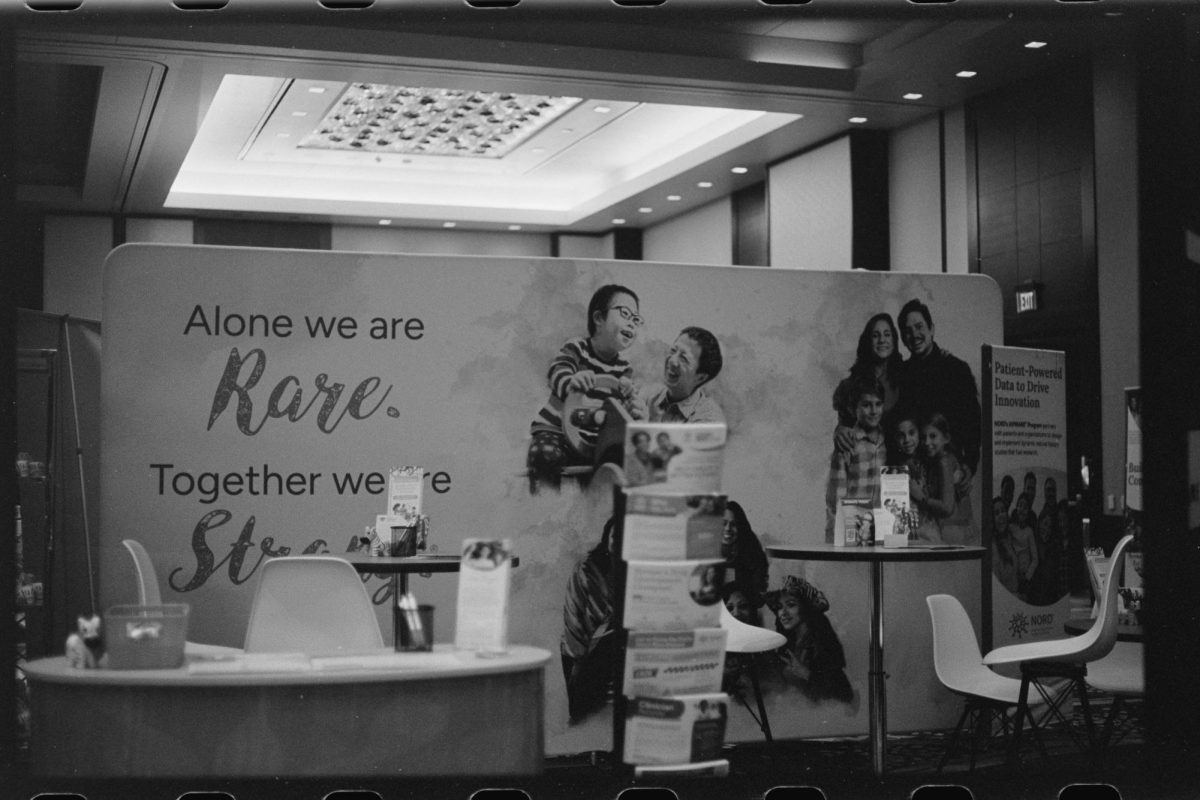As college decision season rolls around, the full effects of the coronavirus on the college admissions process are becoming brazenly clear. Along with claiming the lives of over 500,000 U.S. residents alone, COVID-19 also affects the futures of over 20 million teenagers (ages 15-19) across the country. Graduation and what used to be prom season is just around the corner, and many communities are acknowledging the unfortunate cancellations of these in-person high school events with sympathy. Some schools are even working on creative ways to allow these cherished teenage milestones to persist even under stringent safety protocols. There is no doubt about it- high school juniors and seniors are not having the high school experience they waited for, and it is unfair. But the sad truth is that not even a magical prom or in-person graduation ceremony will amend the anger and disappointment high schoolers nationwide feel. The real brunt of coronavirus on teenagers is not that it forces high school experiences to look different but that it seriously impacts life beyond graduation and makes the future even murkier.
In January, the College Board announced several significant changes to the SAT in response to the ongoing pandemic, including the elimination of the SAT Essay section and the SAT Subject Tests. Many predict that the creators of the ACT will follow suit in the months to come. For over 50 years, these standardized tests have been essential steps on the post-secondary school application journey. College admissions have placed significant weight on students’ scores in these exams, and many students have found them as a make-or-break factor in their applications. The pandemic has seriously affected students’ ability to take the standardized exams, however, as many testing sites cannot safely accommodate large groups of students. Understanding the difficulty of the current world situation, hundreds of colleges around the United States are waiving standardized testing requirements.
Many teenagers cannot help but feel relieved that they no longer have to go through the woes of standardized testing. They are not the only ones who are feeling like a burden has been lifted. There have been significant controversies surrounding standardized testing as an essential deciding factor in college admissions in recent years. Some argue that standardized tests are not an accurate measure of a student’s intelligence, and debates over the veracity of this statement arise each year. Also, college admissions scandals relating to false SAT/ACT scores are not uncommon in the news. Former SAT/ACT administrators have admitted to accepting bribes to let students cheat on exams. Wealthy parents have also admitted to paying people to take the exams in place of their children. Despite the many precautions the College Board and ACT creators have taken to reduce such false testing, scandals continue to persist.
Perhaps the single greatest advantage in eliminating the standardized test requirement in colleges is that these exams have previously highlighted racial and social inequality within the country. The mean SAT score for minority groups, specifically black and Latino teenagers, is significantly lower than for their white and Asian counterparts. Students from lower-income families who attend lower-income schools have a severe disadvantage when preparing for and taking these standardized exams. There is also debate over the costs associated with taking these exams, as many argue that the exam fees put students from lower-income families at a disadvantage. Although the College Board provides fee waivers, about 43% of students living in households with less than $30,000 in annual income do not use the fee waiver. Studies also show that minority groups are less likely to retake the exam for the chance to achieve a better score. The pandemic has also disproportionately affected these students and their ability to find open testing centers. In light of the many events of the past year regarding racial justice, many believe that the elimination of standardized test scores is a step in the right direction.
Nonetheless, there are several downsides associated with colleges’ decisions to go test-optional. Even though colleges have announced that applications without standardized test scores will not be at a disadvantage in the college admissions process, this does not mean that those with such scores will not be at an advantage. The few students who submit standardized scores will now be able to stand out from their peers. Even those who submit scores that are typically considered “average” may be at an advantage merely because they provided a unique measure of their intellectual capability to colleges. In the case that colleges truly do not place an emphasis on scores that students submit, certain testers will be placed at a disadvantage. Some students who are average or below-average students in the classroom are able to excel in standardized testing. Those students, who do not have a stellar GPA or teacher recommendations to rely on, are no longer given the opportunity to stand out in college admissions. Test-optional colleges are now forced to look at other factors when determining whether to admit applicants. Unfortunately, the pandemic has made this transition exceedingly difficult.
For one, colleges are met with fewer and fewer measures of a student’s intellectual capacity because of the changes made in school grading policies and structures. Thousands of high schools transitioned to a pass/fail grading system last spring, leaving many colleges with one or more semesters of practically useless academic performance information. Eliminating standardized test scores means these colleges must place greater emphasis on a student’s GPA, which is becoming much more difficult due to these shifts to pass/fail grading. Even for the schools that follow conventional letter grade systems, GPA emphasis is practically impossible. For the same reason that colleges are willing to accommodate lack of standardized scores, many are being pressured to accommodate poor academic grades. The transition to online learning was difficult for many, and teens are facing even more non-academic related anxieties and worries than ever before. Students are generally struggling to pay attention and receive good grades in an online setting. Many people argue it is unfair for colleges to look at students’ grades due to the severity of their academic disruption. College admissions are struggling to find a solution to how to evaluate students’ academic prowess while also remaining sympathetic for their individual situations.
Yet another missing component in this year’s college applications is a long list of extracurricular activities. In the past, colleges have also taken a student’s extracurricular involvement and leadership into account. Some students who did not excel academically could prove their teamwork or leadership skills through sports, arts, and clubs. The pandemic, however, forced many of these extracurriculars to be cancelled or postponed. Volunteer opportunities, which colleges have previously put significant emphasis on, have also been in short supply. Summer programs and high school jobs have begun to disappear due to the pandemic. Once again, the pandemic has made this evaluation of participation exceedingly difficult as applications begin to look a lot more vacant.
Several college admissions experts predict that colleges will now place most of their emphasis on student essays and letters of recommendations. This is a great positive for the students who are especially artistic, enjoy writing, and/or have an interesting story to tell. The essay can help college admissions staff get to know students on a more personal level and learn something about them that cannot be shown through GPA, SAT/ACT scores, or extracurriculars. However, some students find that their strengths do not lie in language arts. The students who once relied on standardized scores or grades to show their aptitude towards pure deductive reasoning and analysis in mathematics and science will now have to stretch themselves to compete with their more creative writing-inclined peers. While the essay allows students to talk about their experiences and hardships, some have trouble finding something to write about to fit this description. Now, most high school students will all be writing about the same thing: their experiences during the reign of COVID-19. This story is bound to get repetitive, but for many students, it is the only subject they can think of to write an essay about, especially after being cooped up inside for months.
In a typical year, a letter of recommendation would be a very helpful tool when considering applicants for a specific college. Due to the pandemic and the shift to online learning, however, a student’s classroom presence is a lot harder to describe. It has become a lot more difficult for teachers to get to know students through a screen. Moreover, students find it difficult to participate collaboratively with virtual peers or to stand out when they are confined to a small box on Zoom. Letters of recommendation are no longer able to address qualities pertaining to enthusiasm, respectfulness, leadership skills, or ability to cooperate with others- all of which are key characteristics that colleges look for in applicants.
Although college admissions staff have always had a difficult task to perform, the challenges of the past year have made their jobs even harder. “Understanding” is a common theme among the many college updates and reports on websites and newsletters. Every college wants potential applicants to know that they understand what students are going through. They understand that certain communities are in complete lockdown while others may not be: that some students have a lot more opportunities right now than others do. While this has helped relieve many students, it has also sparked many questions about how the college admissions process will be conducted in the future. How can a distinguished student stand out if colleges have to assume less-accomplished students simply do not have the same opportunities? Is this “level playing field” ideal realistic and functional? For many, it seems that the pandemic has provided an opportunity to reform the admissions process to be more inclusive, diverse, and character-based. It is clear that colleges will have to publish new guidelines for how they will conduct their admissions process to keep up with this ever-changing world.
While the college admission process undergoes rapid changes, the mindsets of potential applicants themselves are also changing. The number of college applicants has dropped significantly over the past year. Although many researchers predicted a rise in community college enrollment as a way for high school graduates to continue higher education plans under a budget, the nation’s community colleges actually saw nearly 10% fewer enrollments. Overall nationwide undergraduate enrollment has dropped by 2.5% in the past year alone.
None of these statistics are very surprising for high schoolers. College applications and decisions have always been stressful and difficult, but these feelings have been magnified ten-fold within the past year. Students cannot even visit the colleges they apply to due to safety protocols. While most universities offer virtual campus tours, many students feel the virtual experience does not give them a proper sense of the real campus or its student body. Moreover, students are hesitant to apply to colleges for fear that their education will be conducted via distance learning. Many students can barely afford college as it is, and many question if online learning is worth the incredibly high tuition costs. The pandemic has only worsened these financial strains on families. As colleges struggle to stay alive, many have been forced to raise tuition prices, causing a vicious cycle of financial struggle. International student enrollment has also faced a sharp decline of 10% in the past year, which is affecting diversity rates.
At the same time, many view this as an opportunity to steer away from the college-obsessed society that is deeply ingrained in the American psyche. The average college graduate owes at least $37,584 in student loans plus interest, a sum that many individuals spend the next 30 years or more trying to repay. Colleges are expensive, sometimes excessively so. For example, take an individual with an Art History major, which is the 18th most popular college major, with a starting average salary of $39,400 and a mid-career average of $57,100, who must also pay for student loans. Compare this individual to the average plumber, who makes $53,860 a year with no loans attached. For some occupations, a college degree simply makes no significant difference in average salary. Moreover, many find themselves working in a field that they did not major in or that their major has no significant bearing over their ability to find a job. While college can be an incredible, rewarding opportunity for those who know what they hope to get out of their experiences, it can also be a financial disaster for those who choose to spend their college years partying every night.
There are many alternatives to college, including a gap year, military service, or immediate entry into the workforce. However, just like the college admissions process, these alternatives are also undergoing problems due to the pandemic. For one, the notion of a gap year abroad has become a dream of the past as a result of traveling limitations and border closures. Life has become especially difficult for those teenagers who looked forward to entering the workforce following their secondary schooling. COVID-19 has inflicted serious damage to the U.S. economy. The U.S. Labor Department estimated that over 30 million jobs were lost last spring due to coronavirus-related shut-downs. As millions of degree-bearing adults scramble to find work, there is simply no room left for high school graduates in the job pool. Thousands of teenagers have been forced to rethink their plans and find new, creative ways to make money in an economy that is collapsing.
Whichever way you turn, the future looks pretty dismal…
The future is never clear for high schoolers, more so now than ever before. But you should know that you are not alone. There are millions of teenagers that are undergoing the same anxiety as stress as you are. I understand how frustrating it is. If you are anything like me and you have parents who made you start thinking about colleges when you were in elementary school, the world feels so utterly unreal. I was fortunate enough to take the SAT in November after studying for several months. The test-optional announcements punched me in the gut. My last school’s shift to pass/fail grades was a slap across the face. Going online for my education felt like trying to fit a triangular peg in a circle. I am so worried about college applications. If only I could press the “restart” button and erase everything that has happened over the past year.
When I tell adults that I am a junior, they always give me a sad look and comment on how sad they are that I do not get to have a prom. Of course, I would love to have a junior prom. I would love to be able to go to school football games, have pep rallies, or go to a party, but I would love to be able to sit in a real classroom more. I would love to know what next year will look like. I would love to know if I will ever walk on a college campus as a student. With all those things in mind, prom seems pretty insignificant, and it certainly does not make my “Top 5 Complaints About Coronavirus” list.
I am here to say what I know every high school junior and senior wants and needs to hear: this sucks.
It just plain sucks.
I probably could have come up with a more eloquent adjective to describe our situation, but sometimes you just need someone to sympathize with you on the most basic teenage level there is. I know it is tough. I know it seems like the world is trying to sabotage us. I wish I had some magical anecdote to make everything clear or that I could at least give you some advice to make you feel like you have some control over what happens over the next few months. All I can say is try your best. Just keep hoping that it will get better- because it eventually will! Most importantly, talk to fellow teens. They understand you, and that is what we all need right now.
May the force be with you.







